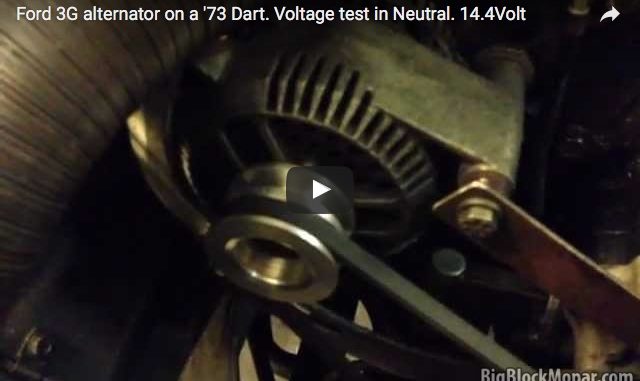
I’ve been annoyed for some time now by the fact that the average ’60/70’s Mopar alternator stops charging when engine rpm’s drop below 650rpm orso.
Since the engine in the ’73 Dart runs on LPG, I got it idling around 500 in drive / 550rpm neutral.
During evening drives, at pretty much at every stopsign the ALT-gauge in the car pegs to almost full discharge. especially if it rains and blower-fan is on.
To solve this issue (since I don’t want to increase the idle-rpms), I wanted to try out a modern alternator and see if these things DO charge better at lower rpm’s.
So a friend got me a 90’s Ford “3G” alternator to try out. I ordered an electrical connector for it to complete it’s ‘internal’ wiring.
Another issue was the 3G-alternator uses a multigroove serpentine pulley, while my car still has v-belts. I decided to make a double row v-belt pulley on the lathe, with a slightly smaller diameter than the smallest v-belt-pulley I already had laying around.
I mounted the alternator on the engine with pretty much a simple curved strip of aluminium added to it.
I also decided to run the headlights through a relay, to keep the lightswitch from frying out and to keep from having high currents running through the bulkhead-connector at the firewall.
After everything was connected again I started up the engine and measured the voltage delivered by the alt. Even with the engine idling slowly in Drive, headlights and defrost-blower-fan on.. the alternator was still charging!
With the engine idling in Neutral the measured voltage increased to 14.4 rightaway. Perfect!


Thanks for the cool write-up! This is exactly what i want to do for my 440 Charger. The Ford 3G is an awesome piece.